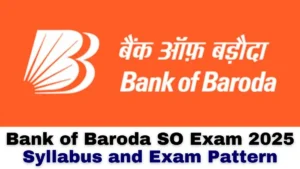‘A @ B’ means ‘A is neither smaller than nor equal to B’.
‘A # B’ means ‘A is not greater than B’.
‘A $ B’ means ‘A is neither greater than nor equal to B’.
‘A * B’ means ‘A is neither greater than nor smaller than B.
‘A © B’ means ‘A is not smaller than B’.
Assuming the above statements to be true, you have to decide which of the conclusions is/are definitely true and then mark your answer accordingly.
Q1. Statements: F @ J, J # R, R * L, L © M
Conclusions:
I. F $ R
II. M # R
III. M © J
(a) None is true
(b) Only I is true
(c) Only II is true
(d) Only either II or III is true
(e) All are true
Q2. Statements: T # W, W $ Q, Q © D, D @ J
Conclusions:
I. J $ T
II. T # J
III. T $ Q
(a) Only I and III are true
(b) Only either I or II is true
(c) Only II and III are true
(d) Only III and either I or II are true
(e) None of these
Q3. Statements: L # V, V $ E, E © U, U @ B
Conclusions:
I. B $ E
II. L $ E
III. B * L
(a) Only I and II are true
(b) Only III is true
(c) Only either I or II is true
(d) All are true
(e) None of these
Q4. Statements: M $ T, T * R, R @ H, H # G
Conclusions:
I. M $ H
II. R @ G
III. M # R
(a) Only I is true
(b) Only II is true
(c) Only III is true
(d) All are true
(e) None is true
Q5. Statements: H © R, R @ W, W * F, J $ F
Conclusions:
I. H @ F
II. J $ W
III. R @ J
(a) Only I and II are true
(b) Only II and III are true
(c) Only III is true
(d) Only either I or III is true
(e) All are true
Directions (6-10): Read the following information and answer the questions that follow:
Seven members of a family J, K, L, M, N, O and P are to be seated in a row from left to right but not necessarily in the same order. All of them are facing towards the north direction. Their professions are: chemists, doctor, engineer, CA, teacher, banker and architect, though not necessarily in that order.
The one who is teacher sits third from the left end of the row. M, who is not the banker, sits immediate right of N. J is the engineer. The one who is chemists sits second from right end of the row. The one who is doctor sits to the immediate left of the one who is banker. P sits to the immediate right of O and to the immediate left of K. N, the architect sits third from the right end of the row . K is an immediate neighbour of one who is an engineer.
Q6. Who among following sits immediate left of J?
(a) O
(b) the engineer
(c) P
(d) the banker
(e) K
Q7. Who among following sits immediate left of M ?
(a) the teacher
(b) J
(c) the chemists
(d) K
(e) N
Q8. Which of the following correctly matches a person with his/her profession?
(a) O – CA
(b) K – teacher
(c) L – banker
(d) P – chemists
(e) None of these
Q9. Who among following sits third to right of O ?
(a) K
(b) J
(c) N
(d) Q
(e) None of these
Q10. How many persons sit between J and the one who is CA?
(a) Four
(b) Three
(c)Two
(d) One
(e) None of these
Directions (11-15): Study the following arrangement carefully and answer the questions given below:
4 1 6 5 8 4 7 5 1 3 2 9 2 5 2 9 1 2 5 3 6 8 2 8 7 3 1 6 2 4 5 4 9
Q11. How many 2s are there in the above arrangement, each of which is immediately preceded by a digit which has a numerical value of less than two?
(a) None
(b) One
(c) Two
(d) Three
(e) More than three
Q12. How many such 4s are there in the above arrangement each of which is immediately followed by a perfect square? (1 is also a perfect square.)
(a) None
(b) One
(c) Two
(d) Three
(e) More than three
Q13. If all the even digits are deleted from the above arrangement, which of the following will be eighth from the right end of the arrangement?
(a) 5
(b) 3
(c) 1
(d) 9
(e) 7
Q14. Which of the following is sixth to the left of the eighteenth digit from the left end of the above arrangement?
(a) 9
(b) 8
(c) 2
(d) 6
(e) None of these
Q15. How many such 5s are there in the above arrangement each of which is immediately preceded by an odd digit and also immediately followed by an odd digit?
(a) None
(b) One
(c) Two
(d) Three
(e) More than three





 The Hindu Review October 2022: Download ...
The Hindu Review October 2022: Download ...
 Bank of Baroda SO Syllabus 2025 and Exam...
Bank of Baroda SO Syllabus 2025 and Exam...
 Understanding Horizontal Reservation in ...
Understanding Horizontal Reservation in ...




